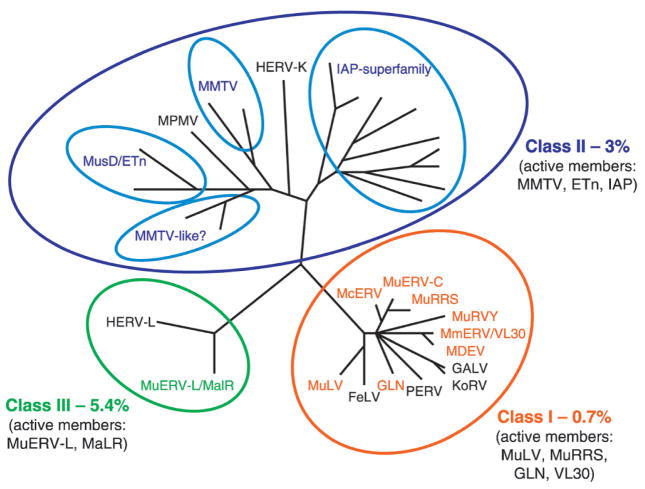Figure 2.
Phylogenetic analysis of ERV RT domains [19] demonstrates the three classes of mouse retrotransposons. RT sequences of ERVs from host species other than mouse are included for comparison and are in black letters. The close relationship of Class I ERVs to XRVs and ERVs from other species is clearly shown. Four distinct clades or superfamilies are defined for the Class II ERVs, one of which (MMTV-like) is poorly characterized. Non-autonomous elements, such as the abundant VL30 s (Class I), ETns (Class II), and MaLRs (Class III) are listed with their presumed parental ERVs, as they do not contain RT domains. The phlyogenetic tree was obtained from http://genomebiology.com/2004/5/3/ R14 and modified to include our own analysis of Class I ERVs.

